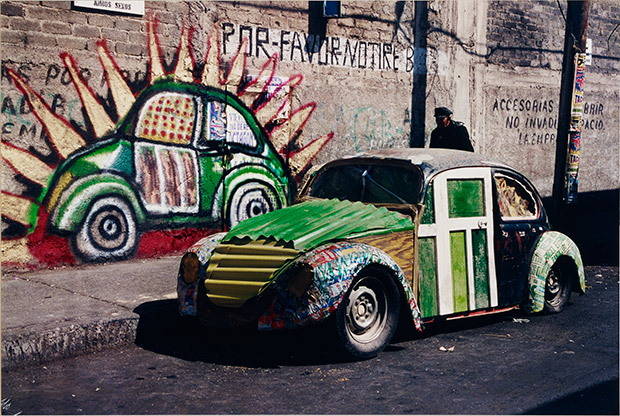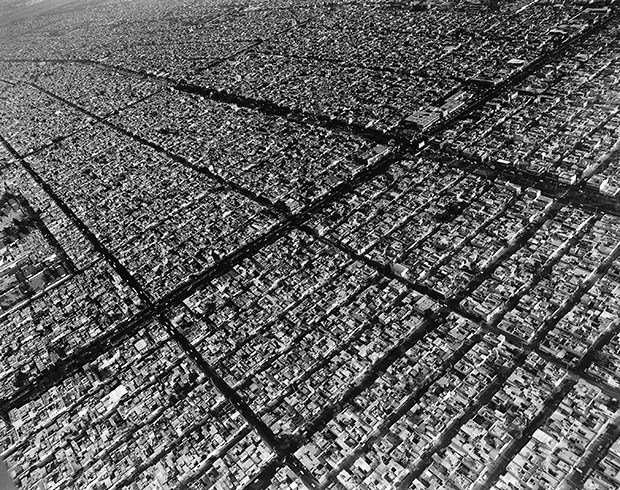From Europe to Mexico and from Mexico to Bern: Over One Century of Artistic Exchange
If you have already visited Mexico, you probably have done so multiple times or are planning your next trip there. On the other hand, if you haven’t been to Mexico yet, there is a decent chance you are considering it. Perhaps this travel project has only just begun in your mind but, believe it or not, you will eventually buy a ticket and go to this culturally rich and multifaceted country. You see, Mexico is like a powerful magnet: the closer you come to it, the more it pulls you toward it.
Over the years many have been swept up by this same desire for the vivid colours, shapes, flavours, light, and intensity of this beautiful land of contradictions. This is especially true if your field of interest lies in art and culture, as some powerful examples demonstrate.
After the turmoil of the lengthy Mexican Revolution of 1910–20, and also later, at a time when Europe was engulfed by the Second World War, many European artists and intellectuals travelled to Mexico—some of them in search of answers to existential questions which seemed to remain unresolved on the ‘Old Continent,’ some because they were escaping into exile as far away as they could get, and some just because they were ready to be surprised and influenced by what they would find. Among these ‘pioneers’ were the French surrealist writers André Breton and Antonin Artaud, both in search of an untamed exoticism they could call instinctual and ‘primitive’; the surrealist women artists Leonora Carrington, from the United Kingdom, and Remedios Varo, from Spain; German Bauhaus master Josef Albers and his artist wife Anni; the Russian and the Catalan filmmakers Sergej Eisenstein and Luis Buñuel; the German sculptor and architect Mathias Goeritz; the Italian photographer Tina Modotti…but only to name a few. Even before them, European intellectuals and artists had been visiting Mexico for hundreds of years. One only need think of the Italian landscape painter Eugenio Landesio, who in the nineteenth century exerted a great influence on his pupil, the Mexican José María Velasco Gómez; or of the German geographer and romantic philosopher Alexander von Humboldt, who spent some years exploring what, back in his day, was still the Kingdom of New Spain.

Betsabeé Romero, Autoconstruido (Auto-Konstruiert / Auto-Constructed), 2000, Farbabzug auf Kodak Professional Digital Paper auf Aluminium kaschiert / Color print on Kodak Professional Digital Paper mounted on aluminum, 68.1 x 101.4 cm, Edition von / of 3 + 2 AP, Nr. / no. 1/3. Daros Latinamerica Collection, Zürich Foto: Die Künstlerin / the artist © Die Künstlerin / the artist
Though can the same be said for the reverse? Have Mexican artists been coming to Europe to find a new (or rather different) way of looking at things, an alternative cultural perspective? Have they been bringing their ideas and creativity in their baggage with them? Have they been ready to mix it with the local artistic trends? No doubt, the answer to all these questions is an empathic “yes.” However, if the famous muralist artist Diego Rivera and his iconic painter wife Frida Kahlo were already globetrotters and international celebrities back in the first half of the twentieth century and nowadays are considered national treasures, sadly the same still cannot be said for many other exceptional Mexican modernist artists who were their contemporaries. Dr. Atl (alias Gerardo Murillo), Chucho Reyes (alias Reyes Ferreira Jésus), Luis Barragán, but even José Clemente Orozco and David Alfaro Siqueiros—the latter two rounding out the triad of muralists together with Rivera—they all spent some time in Europe. Nevertheless, deprived of the same chances, economic success, and international contacts and patronage enjoyed by Rivera, in Europe their names remain almost unknown these days among the non-specialized audience and their works are seldom on view in museums and exhibitions outside of Mexico and the United States.
If modern Mexican artists are still little known in Europe, this situation is radically different if one looks at the contemporary art scene. In the era of globalisation, the Internet and jet aviation there are more and more opportunities offered to contemporary Mexican artists not just to travel to any corner of the planet, but also to be seen, to promote themselves, and to make an international career supported by a network or prominent art galleries and art collections with global visibility and contacts. One of these amazing platforms of visibility is certainly offered by the Daros Latinamerica Collection based in Zurich, Europe’s largest and most important collection of contemporary art from Latin America, today comprising 1231 artworks by 120 artists.
There are fifteen Mexican artists represented in the Daros Latinamerica Collection, seven on which are women: Ximena Cuevas (*1963), Claudia Fernández (*1965), Teresa Margolles (*1963), Betsabeé Romero (*1963), Maruch Sántiz Gómez (*1975), Teresa Serrano (*1936), and Melanie Smith (*1965). Without Restraint: Works by Mexican Women Artists from the Daros Latinamerica Collection, the exhibition on show at Kunstmuseum Bern during this coming summer, presents together for the first time their work—more than 30 pieces among photographs, videos, objects, and installations—examining it in the context of the empowerment of women and women artists in Mexico.
With the sole exception of Maruch Sántiz Gómez, a talented indigenous artist from Chiapas in her early forties, all of the other artists in the exhibition have studied, lived, or at least extensively travelled in the US or Europe. Some of them were recently featured in one-woman exhibitions or mounted temporary installations in institutions as prestigious as the Museum Boijmans Van Beuningen in Rotterdam (Melanie Smith) and The British Museum in London (Betsabeé Romero).

Melanie Smith, Photo for Spiral City (II) (Foto zu Spiralstadt [II]), 2002, Silbergelantineabzug / Gelatin silver print, 127 x 152 cm, Edition von / of 3, Nr. / no. 3/3, mit schwarzem Stift signiert und nummeriert verso unten links / Signed and numbered on verso in black pen lower left: (Melanie Smith 3/3). Daros Latinamerica Collection, Zürich, Photo: Unknown photographer / Courtesy Galería OMR, México D.F. © The artist
The exhibition Without Restraint coincides with an important anniversary that marks 70th years of diplomatic relations between Switzerland and Mexico. Therefore, if this year you still cannot buy a ticket to Mexico and realize your travel plans, you should certainly at least book a visit to the Swiss capital and come to Kunstmuseum Bern: you will see for yourself there is much more to Mexico than you had thought.
Die Ausstellung Without Restraint: Works by Mexican Women Artists from the Daros eröffnet am 2. Juni.
Veröffentlicht unter Allgemein, Experten am Werk
Schlagwörter: Daros Latinamerica Collection, Mexikanische Kunst

